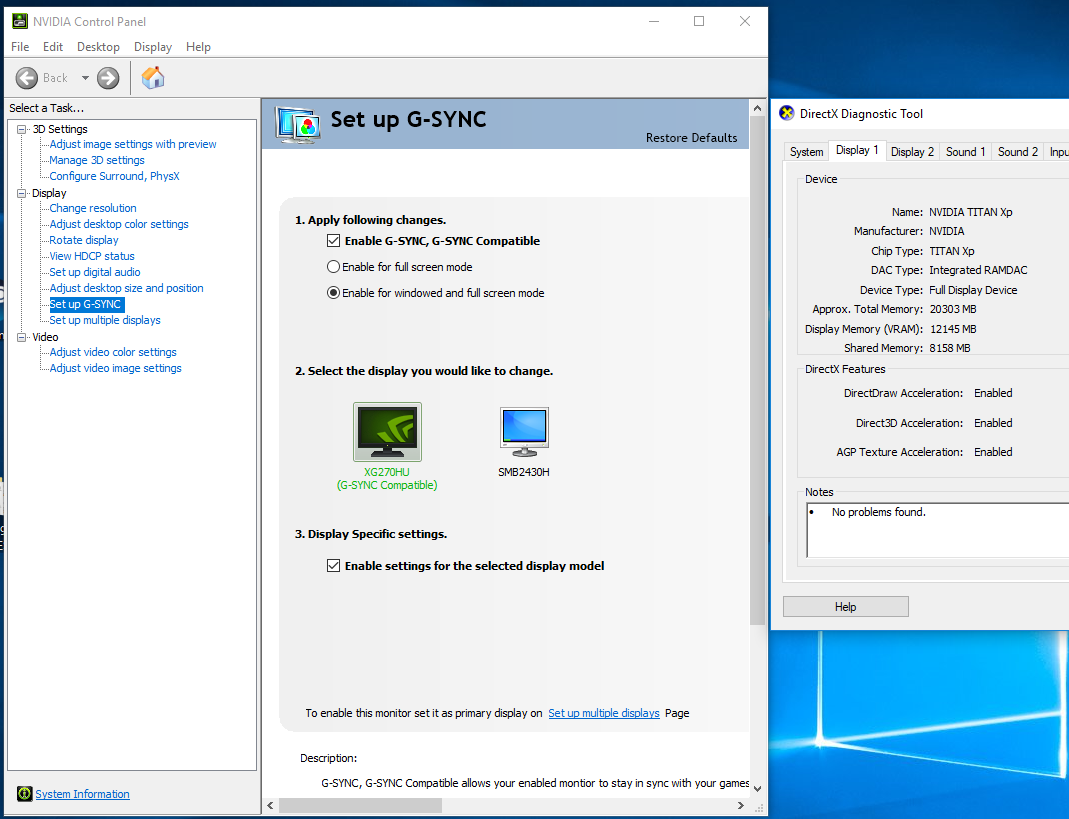- Joined
- Feb 3, 2017
- Messages
- 3,990 (1.31/day)
| Processor | Ryzen 7800X3D |
|---|---|
| Motherboard | ROG STRIX B650E-F GAMING WIFI |
| Memory | 2x16GB G.Skill Flare X5 DDR5-6000 CL36 (F5-6000J3636F16GX2-FX5) |
| Video Card(s) | INNO3D GeForce RTX™ 4070 Ti SUPER TWIN X2 |
| Storage | 2TB Samsung 980 PRO, 4TB WD Black SN850X |
| Display(s) | 42" LG C2 OLED, 27" ASUS PG279Q |
| Case | Thermaltake Core P5 |
| Power Supply | Fractal Design Ion+ Platinum 760W |
| Mouse | Corsair Dark Core RGB Pro SE |
| Keyboard | Corsair K100 RGB |
| VR HMD | HTC Vive Cosmos |
Adaptive-sync is a monitor-side feature of DisplayPort (optional in DP 1.2a and newer) that allows GPU to tell monitor to take the new frame now (when GPU finishes rendering it) instead of monitor asking for the frame at regular intervals (for example every 1/60 seconds for 60Hz monitor). Nothing less, nothing more.
FreeSync (the DisplayPort part of it) and now GSync Compatible are implementation of VRR which leverage that feature, adding stuff on top like frame doubling - LFC and the Nvidia counterpart which does not have a name as it is intended to be there for all certified monitors.
There is work in drivers that AMD has done and Nvidia really never has as GSync module (for all its faults and price) has been a known piece of hardware for GSync, doing some of the work in hardware - both frame doubling and adaptive overdrive is claimed to be done by the module. That driver work is something Nvidia will likely do even beyond the monitors they certify.
HDMI does not have a standard VRR feature in HDMI 2.0 but will have it optionally in upcoming HDMI 2.1. Both AMD and Nvidia plus Intel will quite definitely create their VRR solutions to support this.
FreeSync (the DisplayPort part of it) and now GSync Compatible are implementation of VRR which leverage that feature, adding stuff on top like frame doubling - LFC and the Nvidia counterpart which does not have a name as it is intended to be there for all certified monitors.
There is work in drivers that AMD has done and Nvidia really never has as GSync module (for all its faults and price) has been a known piece of hardware for GSync, doing some of the work in hardware - both frame doubling and adaptive overdrive is claimed to be done by the module. That driver work is something Nvidia will likely do even beyond the monitors they certify.
HDMI does not have a standard VRR feature in HDMI 2.0 but will have it optionally in upcoming HDMI 2.1. Both AMD and Nvidia plus Intel will quite definitely create their VRR solutions to support this.
Last edited:






